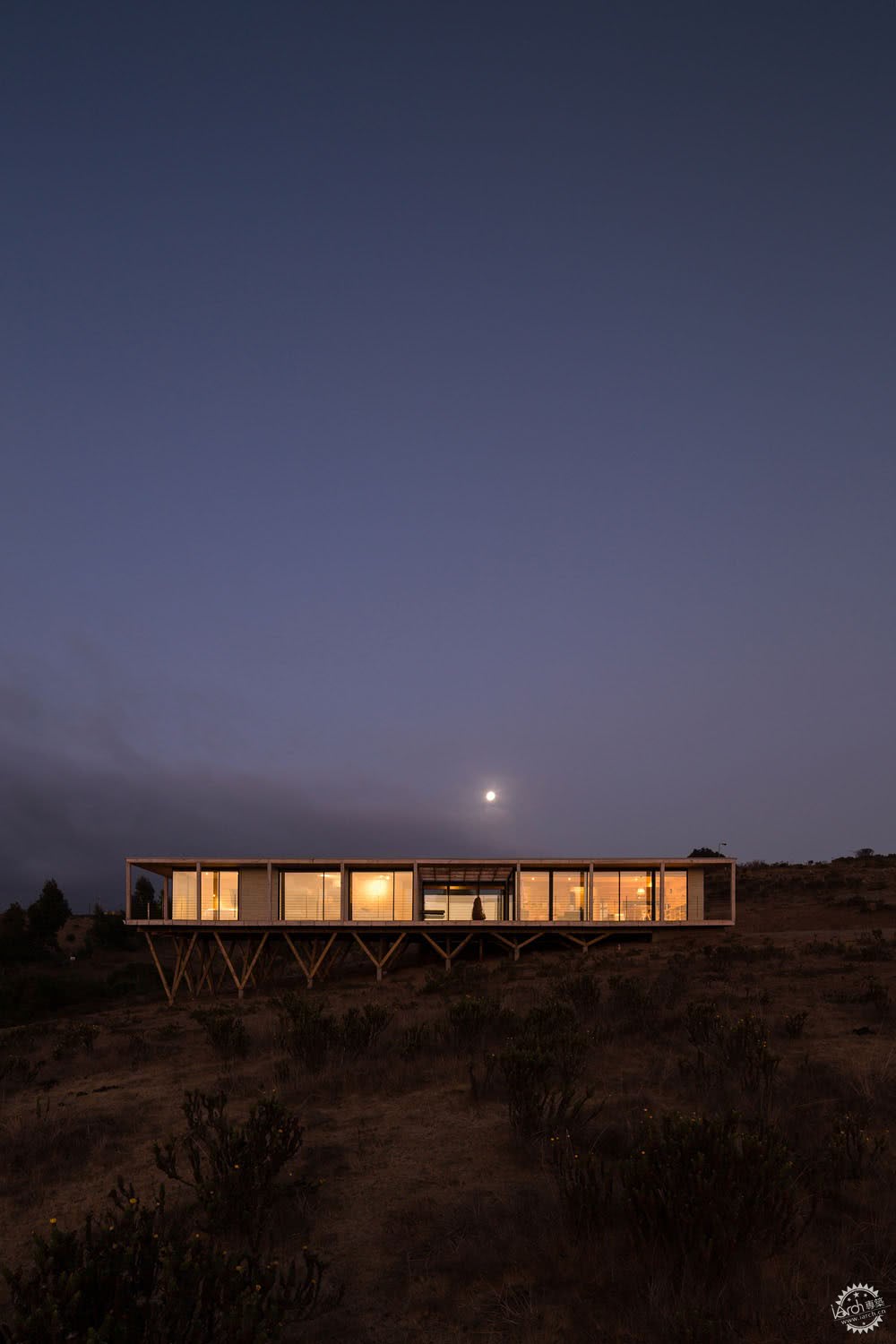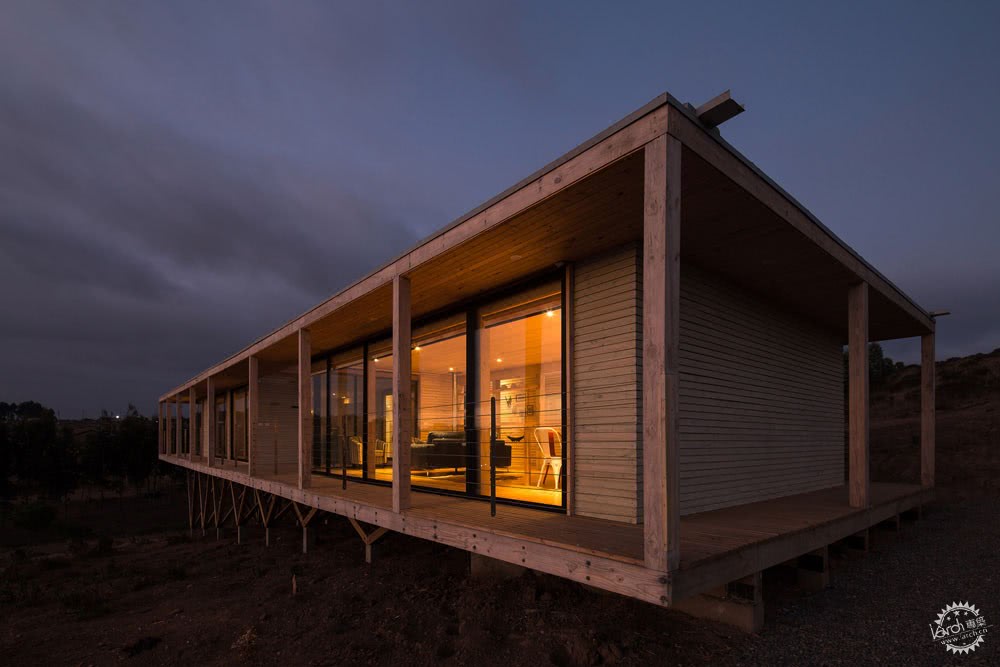三角支柱支撑的Dock住宅
Dock House in coastal Chile by SAA rests on triangular wooden stilts

智利SAA Arquitectura + Territorio公司使用逐渐升高的支架,将这座海边度假屋抬高到斜坡场地之上,可以让使用者看到智利海岸的景色。
Chilean firm SAA Arquitectura + Territorio has used angled stilts that gradually increase in height to raise this seaside holiday home above its sloped site and offer occupants views of Chile's coast.

Dock住宅位于智利Valparaíso地区的Pichicuy小镇,这是一个沿海的山区,距离圣地亚哥大约180千米。这座150平方米的住宅建造在一个生长着灌木的倾斜场地上,距离海滩和太平洋有很短的步行距离。
The Dock House is located in the town of Pichicuy in Chile's Valparaíso region – a mountainous and coastal area about 180 kilometres from Santiago. Built on a sloped site dotted with shrubs, the 150-square-metre residence is a short walk from the beach and the Pacific Ocean.
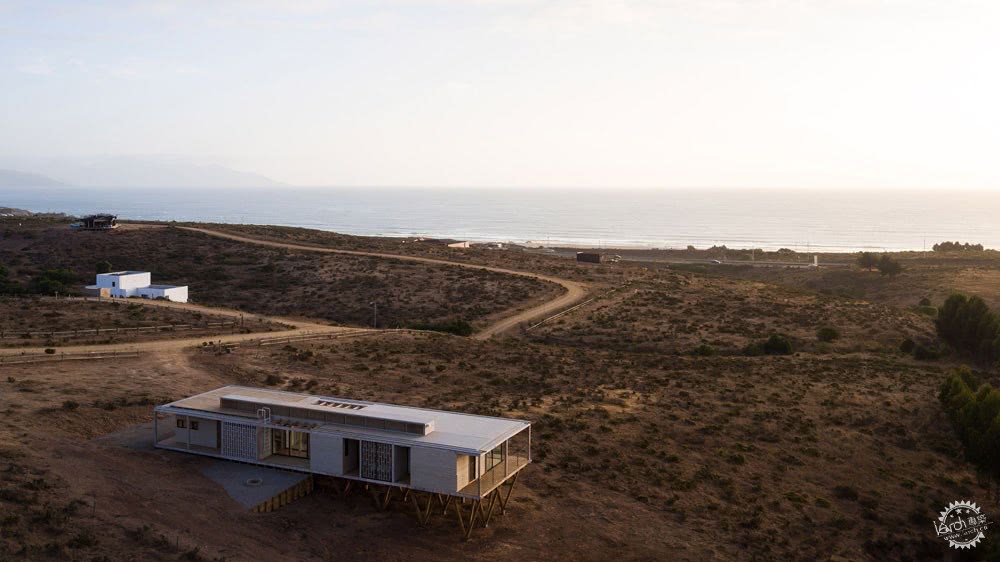
设计方案以丘陵地形为出发点,建筑师希望能在住宅周围建设水景。
“我们决定将布局限定在一个平面里,将建筑像码头与斜坡相结合,从而与海平线形成联系。”建筑师说,该事务所在圣地亚哥与巴拉斯港均有工作室。
The design was guided by the hilly terrain and a desire to provide views of the water throughout the dwelling.
"It was decided that the entire layout should be confined to one level, establishing a relation to the sea's horizon by way of siting the house against the slope, like a dock," said SAA Arquitectura + Territorio, which has offices in Santiago and Puerto Varas.
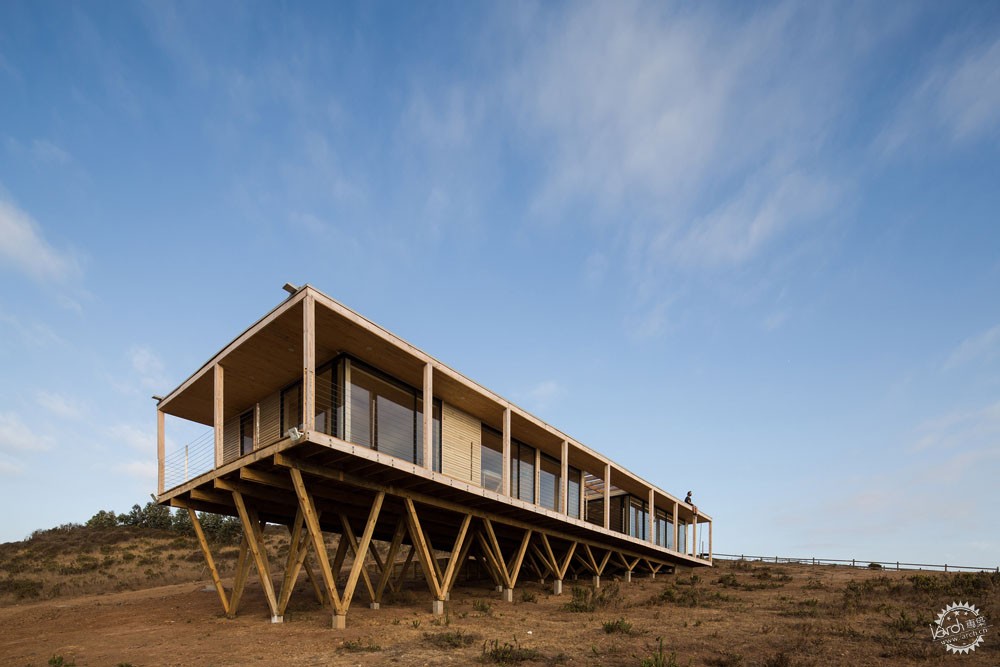
建筑坐落在木结构的基座上,还有一些固定在混凝土地板上木板条。这些柱子随着地形的倾斜而逐渐抬升,最高为3.75米。建筑的外墙、柱子、梁用的都是松树材料。
The cabin sits atop a structural wooden plinth and a number of diagonal wooden pillars anchored to concrete footings. The pillars become taller as the terrain slopes downward, with the highest one rising 3.75 metres. The home's exterior walls are made of pine, as are the columns and beams.
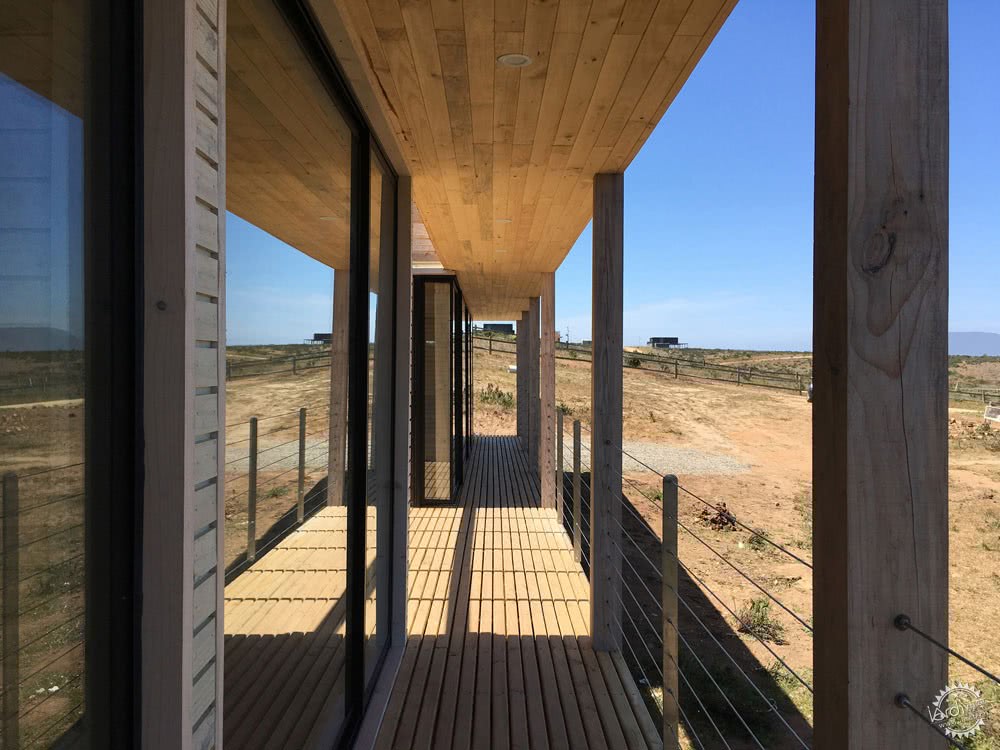
Photograph by Sergio Araneda
“木结构是整座住宅最重要的表现部分。”建筑师说。
它的西南面朝向大海,使用者通过大面积的玻璃窗可以观赏到广阔的景色。东北部抬高处透明度较低。
"The wooden structure is proposed as an important part of the house's overall expression," the team said.
The southwest facade, which looks toward the sea, features large stretches of glass that offer sweeping views. The northeast elevation is less transparent.
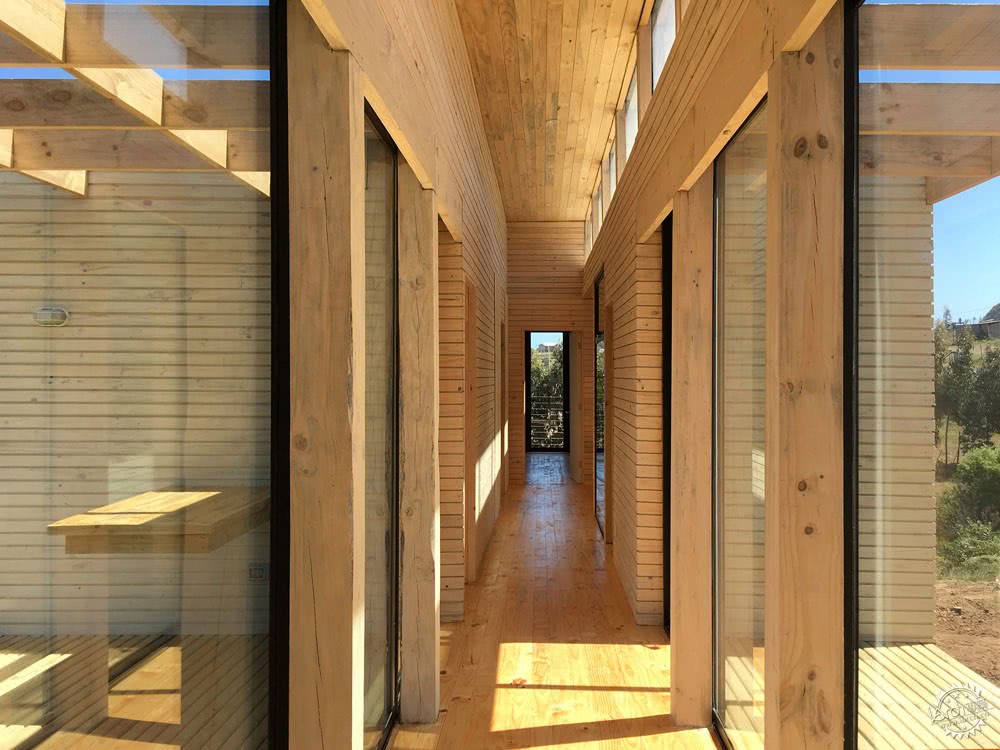
Photograph by Sergio Araneda
针对这个立面,建筑师使用了实心墙、屏风以及内凹区域来与环境形成呼应。藤架延长了外部的长度,这样有助于在不遮挡所有阳光的前提下减少热量。
For this facade, the team used a mix of solid walls, screens, and recessed areas in response to environmental conditions. Stretching the length of the exterior is a pergola that helps reduce heat gain without blocking all sunlight.

Photograph by Sergio Araneda
“在东北方向,周边的设计尊重了场地的隐私,还对自然光线进行了适当利用。”建筑师说。
"On the northeast, the perimeters are designed to respect the privacy of the site, as well as the proper utilisation of natural light," the studio said.
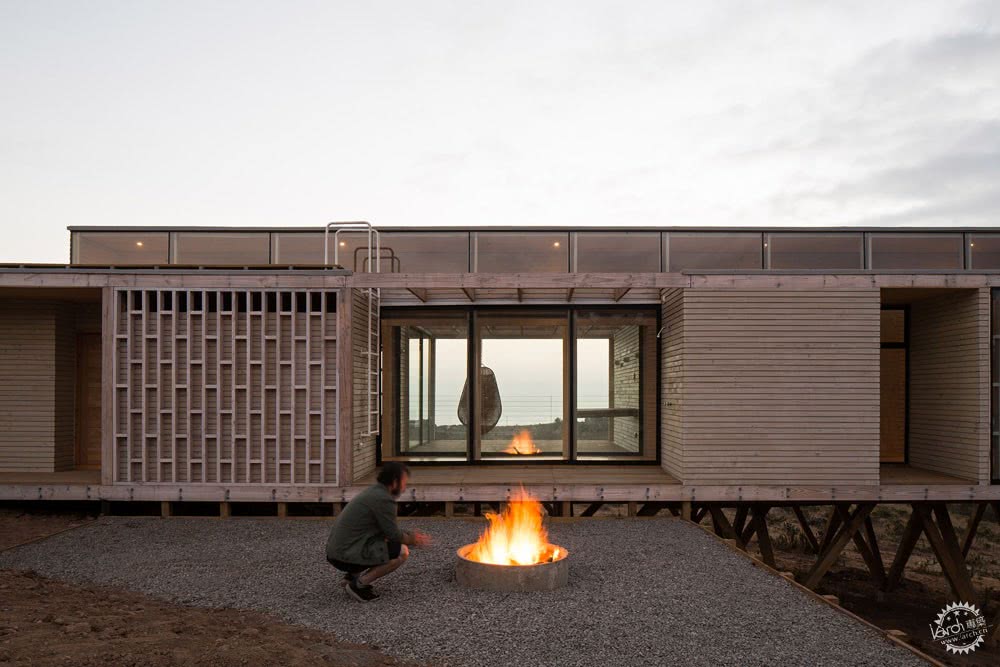
建筑的东北面正对着一个带有圆形火坑的平台。这座小屋和周围的山丘为露台遮挡了大风。
在内部,住宅分为两个区域,中间是有条状顶棚的木质平台。
Just beyond the northeast facade is a terrace with a circular fire pit. The cabin and surrounding hills help shield the terrace from wind.
Inside, the dwelling is organised into two zones separated by a wooden terrace topped with a slatted canopy.

Photograph by Sergio Araneda

与住宅主入口相邻的是主要生活区,它包含了开放的休息室、厨房和餐厅,其他区域包含有三间卧室、两间浴室和一个有双层床的角落。
Adjacent to the home's main entrance is the main living area, which consists of an open-plan lounge, kitchen and dining area. The other zone contains three bedrooms, two bathrooms and a nook with bunkbeds.

内部空间主要应用了蜂蜜色的木材,有助于营造温暖而且舒适的氛围。
Interior spaces are dominated by honey-toned wood, helping establish a warm and cosy ambiance.
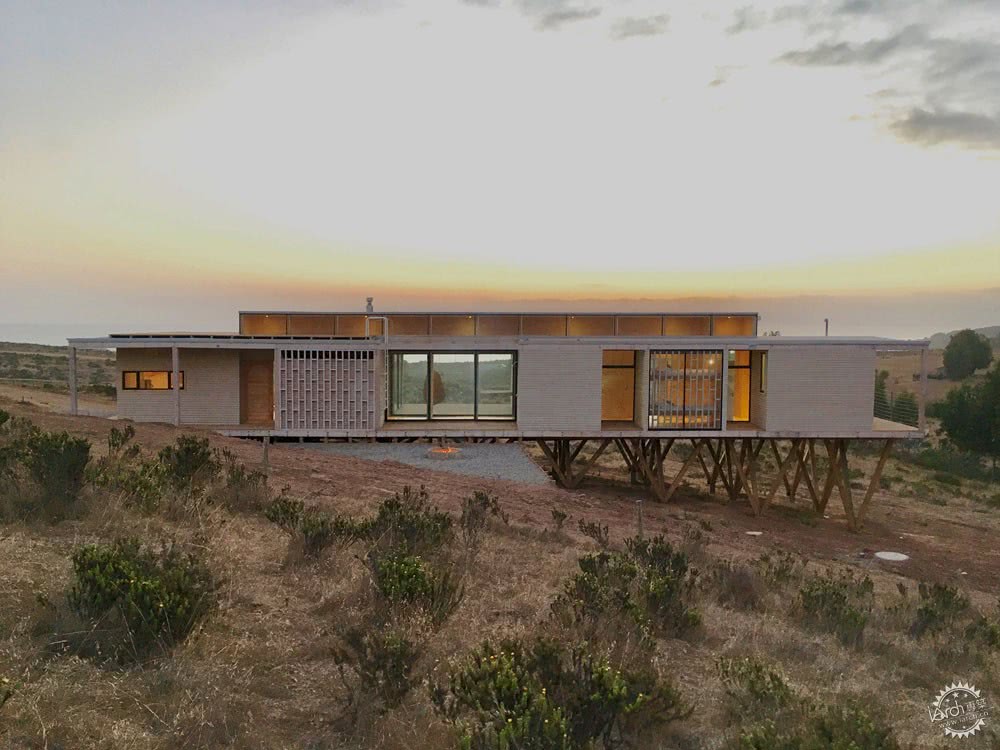
Photograph by Sergio Araneda
Valparaíso的风景非常优美,这是一座受人欢迎的度假屋。
该地区的其他项目包括由Mobil Arquitecto设计的松树立面度假住宅,还有由建筑师Gonzalo Iturriaga设计的黑色木质住宅,以及由建筑师Alejandro Soffia和Gabriel Rudolphy设计的一作低造价海滨综合体。
照片拍摄:Nicolás Saieh(除非有特别注明)
Featuring scenic landscapes, the Valparaíso region is a popular spot for vacation homes. Other projects in the area include a pine-clad holiday dwelling by Mobil Arquitecto, a blackened wooden dwelling by architect Gonzalo Iturriaga, and a low-cost seaside complex by architects Alejandro Soffia and Gabriel Rudolphy.
Photography is by Nicolás Saieh, unless stated otherwise.


